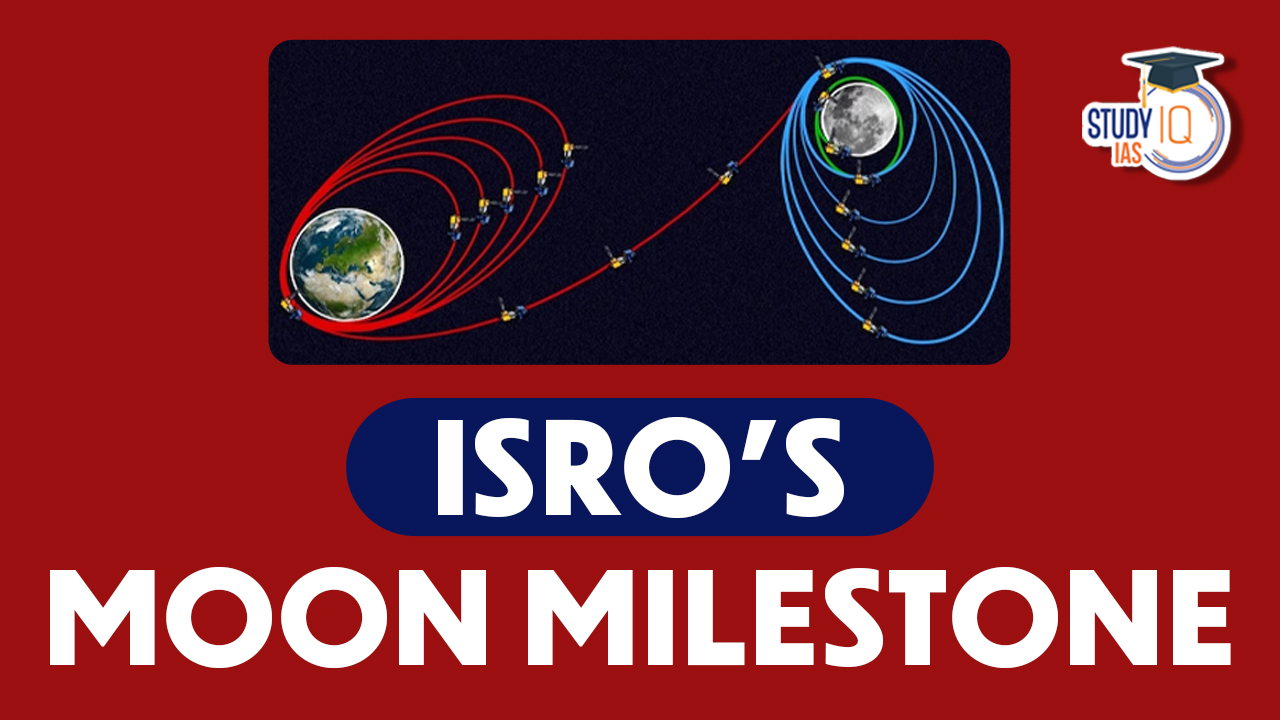Table of Contents
Context: With the launch of Chandrayaan-3, the Indian Space Research Organisation (ISRO) is set to make its second attempt to land a spacecraft on the Moon.
More on the News
- Earlier in 2019, due to problems that had emerged during the last stage of the descent, Chandrayaan-2’s lander and rover crashed on the moon’s surface.
- If the Chandrayaan-3 mission achieves a successful “soft” landing on the Moon, India will join the exclusive group of countries that have accomplished this feat.
- Currently, the only nations to have successfully landed a spacecraft on the Moon are the United States, Russia (formerly the Soviet Union), and China.
Understanding India’s Lunar Missions
Working of Space Missions:
- Space missions typically involve two main components:
- The rocket (carrier): to transport the spacecraft into space and
- The spacecraft (payload): to carry out the intended mission objectives.
- During launch, the rocket is powered by a combination of fuel and oxidizers, which generate energy for propulsion.
- The rocket undergoes a period of powered flight, ascending through Earth’s atmosphere and gaining acceleration. The propulsion provided by the rocket allows the spacecraft to overcome Earth’s gravitational pull and enter space.
- As the powered flight continues, the rocket’s stages gradually burn out and separate. The final stage of the rocket is responsible for placing the spacecraft into its intended orbit around the targeted planetary body or destination. This is when the spacecraft separates from the rocket, and its independent operations commence.
- The spacecraft, which can be a satellite or another payload, carries out the specific objectives of the mission such as scientific research, communication services, remote sensing, exploration, etc for which the mission was designed.
- Not all space missions involve the return of the spacecraft to Earth. Some missions are designed for one-way journeys or to explore distant celestial bodies where the spacecraft remains indefinitely.
Chandrayaan Missions:
- The Chandrayaan missions refer to India’s lunar exploration missions conducted by the Indian Space Research Organisation (ISRO).
- The missions aim to study and explore the Moon, beginning with Chandrayaan-1, which was launched on October 22, 2008.
Chandrayaan 1:
- The primary scientific objectives of the Chandrayaan-1 mission were to create a comprehensive three-dimensional atlas of the Moon’s near and far side and to conduct high-resolution chemical and mineralogical mapping of the lunar surface.
- The mission sought to gather valuable data about the Moon’s composition, geology, and presence of water.
- Chandrayaan-1 completed more than 3,400 orbits around the Moon and operated for at least 312 days until losing radio contact in 2009.
- One significant achievement of the mission was the utilization of indigenously developed technology.
- During the mission, a payload called the Moon Impact Probe (MIP) was separated from the spacecraft and deliberately crashed into the lunar South Pole.
- This controlled impact allowed India to make discoveries regarding the presence of water (H2O) and hydroxyl (OH) on the lunar surface.
- The data also revealed an enhanced abundance of water towards the polar regions.
- Additionally, ice was detected in the North polar region of the Moon.
Chandrayaan 2:
- Chandrayaan-2 is an integrated spacecraft mission consisting of an Orbiter, Lander (Vikram), and Rover (Pragyan) designed to study the Moon.
- The mission’s objectives include:
- Investigating the extent and distribution of water on the Moon, building upon the evidence of water molecules discovered by Chandrayaan-1.
- Studying the lunar surface’s topography, seismography, composition, and atmosphere.
- Examining ancient rocks and craters to gain insights into the origin and evolution of the Moon.
- Exploring the South Pole region of the Moon for potential clues about the early solar system and its history.
- Mapping the lunar surface and creating 3D maps.
- Chandrayaan-2 was launched in July 2019 to explore the Moon’s south pole.
- However, it experienced a partial success as the lander (Vikram) and rover (Pragyan) crashed on the lunar surface on September 7, 2019.
- The lander, which was supposed to decrease its velocity by the time it was 400 meters from the lunar surface, encountered system errors, resulting in a high velocity and a subsequent crash.
- Despite the setback, the Orbiter functioned successfully and continued to gather valuable data.
- It built upon the findings of Chandrayaan-1 and confirmed the presence of water signatures at all latitudes on the Moon.
- The Large Area Soft X-Ray Spectrometer (CLASS), an instrument onboard the mission, made notable discoveries of minor elements like chromium and manganese through remote sensing.
Chandrayaan 3:
- Chandrayaan-3 is the lunar mission of ISRO developed to demonstrate India’s technical capabilities and achieve a successful soft landing on the Moon.
- A soft landing refers to the controlled descent and gentle touchdown of a spacecraft on the lunar surface without any damage.
- The mission will utilize the same payloads as Chandrayaan-2, with four scientific payloads on the lander and two on the rover.
- The lander’s payloads will study lunar quakes, thermal properties of the lunar surface, changes in the plasma near the surface, and include a passive experiment to accurately measure the distance between Earth and the Moon.
- One of the lander’s payloads is provided by NASA.
- The rover, on the other hand, will focus on studying the chemical and mineral composition of the lunar surface.
- It aims to determine the presence and composition of elements like magnesium, aluminium, and iron in the lunar soil and rocks.
- The landing site for Chandrayaan-3 will be near the south pole of the Moon, similar to the Chandrayaan-2 mission.
- If successful, Chandrayaan-3 will become the world’s first mission to achieve a soft landing in the vicinity of the lunar south pole.
What is the significance of landing in the Moon’s south pole?
Landing near the south pole of the Moon holds significant scientific and practical advantages for space exploration. Some reasons for choosing the south pole as a landing site:
- Water Ice Deposits:
- The south pole region of the Moon is believed to have water ice deposits in permanently shadowed areas of craters.
- These ice deposits are of great interest because water is essential for life support and can be used as a potential resource for producing fuel and oxygen in future deep space missions.
- By landing near the south pole, missions can study the distribution, abundance, and characteristics of these lunar volatiles.
- Resource Utilization:
- If the lunar volatiles in the south pole region contain hydrogen and oxygen, it could potentially serve as a valuable resource for future human missions.
- Hydrogen and oxygen can be extracted from water ice and used to produce rocket propellant, breathable air, and drinking water.
- Utilizing local resources on the Moon reduces the dependency on Earth for supplies and significantly enhances the sustainability of long-duration missions.
- Scientific Discoveries:
- The extreme and contrasting conditions near the lunar south pole provide a unique environment for scientific exploration.
- The permanently shadowed craters may preserve ancient material, such as volatile compounds and organic molecules, offering insights into the Moon’s history and the early solar system.
- Studying the south pole region can also help in understanding lunar geology, composition, and the processes that shaped the Moon.
- Future Missions:
- Exploring and understanding the lunar south pole serves as a stepping stone for future deep space missions.
- By gaining knowledge of this challenging region, scientists and engineers can develop technologies, strategies, and infrastructure for sustained human presence on the Moon and, eventually, for exploring other destinations in the solar system.


 Daily Quiz 14 April 2025
Daily Quiz 14 April 2025
 UPSC Syllabus 2025, Check UPSC CSE Sylla...
UPSC Syllabus 2025, Check UPSC CSE Sylla...
 EU Plans to Slash General Data Protectio...
EU Plans to Slash General Data Protectio...





















